Alien species
The spread of invasive exotic species is the second most important cause of biodiversity loss at the global level after habitat destruction. Exotic animal or plant species (also known as alloctonous or alien species) include all species accidentally or voluntarily transported by man outside of their native biogegraphic range. Invasions of alien species are the outcome of a complex series of processes, many of which are motivated by economics, such as the use of exotic species in productive or commercial activities, expanding trade in goods and services, and increased human migrations and mobility. Once they have been introduced into a new environment, alien species become invasive if they are able to adapt and reproduce without human intervention. The absence of predators and/or competitors can lead to the unchecked expansion.
(from www.montecristo2010.it)
Fauna
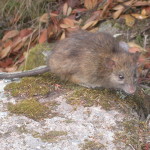 Balck Rat (Rattus rattus)
Balck Rat (Rattus rattus)
This species has caused more extinctions than any other in the world. The rat has been eliminated from the islands of Giannutri, Montecristo and La Scola.
 Wild Boar (Sus scrofa)
Wild Boar (Sus scrofa)
The cloven-hooved animal introduced for hunting on the Island of Elba in the 1950s and 60s has now spread everywhere. It damages fauna, flora, agricultural systems and residential structures, with financial consequences that cannot be ignored. A drastic reduction in numbers is the only solution, in order to reduce the impact the species has on the native community.
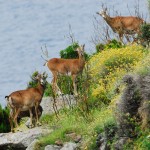 Mouflon (Ovis aries)
Mouflon (Ovis aries)
Suited to rocky, arid environments, this species was introduced to the three main islands of the archipelago and spread considerably, thanks to the absence of natural predators. A voracious herbivore, it prevents the growth of natural vegetation and damages crops. Current solutions include the drastic reduction of numbers and, where possible, total elimination.
Flora
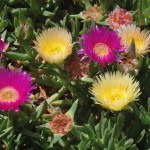 Hottentot Fig (Carpobrotus spp.)
Hottentot Fig (Carpobrotus spp.)
Behind the beautiful pink and yellow flowers, this South African succulent plant hides an invasive nature. Its carpet of leaves suffocates the native flowers and shrubs and the only solution for their protection is to uproot it and prevent it from spreading.
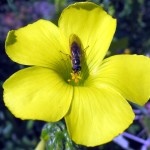
Yellow Sorrel (Oxalis pes-caprae)
With leaves similar to that of clover, this plant comes from South Africa and blooms in spring with intense, yellow flowers that are of great aesthetic impact. It contains substances that are poisonous to livestock and has invaded vast areas of land, including on our islands. Removing it is very difficult due to the roots and bulbs that spread widely underground.
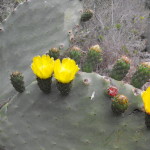
Prickly pear (Opuntia spp.)
There are various species from Central and South America found in the archipelago. Planted either for ornamental reasons or to make use of the edible fruit, they spread rapidly and took the place of traditional vegetation.
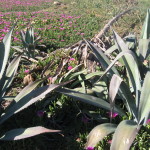
Agave (Agave americana)
This plant, originally from Central America and used for ornamental purposes, quickly colonises rocks and cliffs, to the detriment of natural vegetation. Planting it in gardens should be avoided, as it spreads all over with no difficulty.




